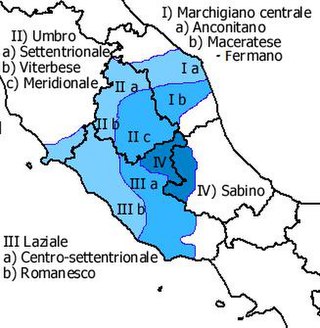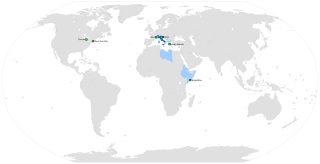
Italian is a Romance language of the Indo-European language family that evolved from the Vulgar Latin of the Roman Empire. Together with Sardinian, Italian is the least divergent language from Latin. Spoken by about 85 million people (2022), Italian is an official language in Italy, San Marino, Switzerland, and is the primary language of Vatican City. It has official minority status in Croatia and in some areas of Slovenian Istria.

The Romance languages, also known as the Latin or Neo-Latin languages, are languages that are directly descended from Vulgar Latin. They are the only extant subgroup of the Italic branch of the Indo-European language family.

Balearic is the collective name for the dialects of Catalan spoken in the Balearic Islands: mallorquí in Mallorca, eivissenc in Ibiza and menorquí in Menorca.
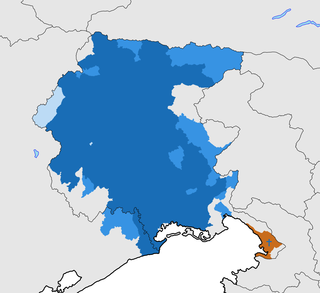
Friulian or Friulan is a Romance language belonging to the Rhaeto-Romance family, spoken in the Friuli region of northeastern Italy. Friulian has around 600,000 speakers, the vast majority of whom also speak Italian. It is sometimes called Eastern Ladin since it shares the same roots as Ladin, but over the centuries, it has diverged under the influence of surrounding languages, including German, Italian, Venetian, and Slovene. Documents in Friulian are attested from the 11th century and poetry and literature date as far back as 1300. By the 20th century, there was a revival of interest in the language.
Ingrian, also called Izhorian, is a nearly extinct Finnic language spoken by the Izhorians of Ingria. It has approximately 70 native speakers left, all of whom are elderly.

Masbateño or Minasbate is a member of Central Philippine languages and of the Bisayan subgroup of the Austronesian language family spoken by more than 724,000 people in the province of Masbate and some parts of Sorsogon in the Philippines. Masbatenyo is the name used by the speakers of the language and for themselves, although the term Minásbate is sometimes also used to distinguish the language from the people. It has 350,000 speakers as of 2002, with 50,000 who speak it as their first language. About 250,000 speakers use it as their second language.
In phonetics, vowel reduction is any of various changes in the acoustic quality of vowels as a result of changes in stress, sonority, duration, loudness, articulation, or position in the word, and which are perceived as "weakening". It most often makes the vowels shorter as well.

Tuscan is a set of Italo-Dalmatian varieties of Romance spoken in Tuscany, Corsica, and Sardinia.

Ligurian or Genoese is a Gallo-Italic language spoken primarily in the territories of the former Republic of Genoa, now comprising the area of Liguria in Northern Italy, parts of the Mediterranean coastal zone of France, Monaco, the village of Bonifacio in Corsica, and in the villages of Carloforte on San Pietro Island and Calasetta on Sant'Antioco Island off the coast of southwestern Sardinia. It is part of the Gallo-Italic and Western Romance dialect continuum. Although part of Gallo-Italic, it exhibits several features of the Italo-Romance group of central and southern Italy. Zeneize, spoken in Genoa, the capital of Liguria, is the language's prestige dialect on which the standard is based.

Central Italian refers to the dialects of Italo-Romance spoken in the so-called Area Mediana, which covers a swathe of the central Italian peninsula. Area Mediana is also used in a narrower sense to describe the southern part, in which case the northern one may be referred to as the Area Perimediana, a distinction that will be made throughout this article. The two areas are split along a line running approximately from Rome in the southwest to Ancona in the northeast.
French is a Romance language that specifically is classified under the Gallo-Romance languages.
The Shuswap language is a northern Interior Salish language traditionally spoken by the Shuswap people of British Columbia. An endangered language, Shuswap is spoken mainly in the Central and Southern Interior of British Columbia between the Fraser River and the Rocky Mountains. According to the First Peoples' Cultural Council, 200 people speak Shuswap as a mother tongue, and there are 1,190 semi-speakers.

Portuguese orthography is based on the Latin alphabet and makes use of the acute accent, the circumflex accent, the grave accent, the tilde, and the cedilla to denote stress, vowel height, nasalization, and other sound changes. The diaeresis was abolished by the last Orthography Agreement. Accented letters and digraphs are not counted as separate characters for collation purposes.
African Romance or African Latin is an extinct Romance language that was spoken in the various provinces of Roman Africa by the African Romans under the later Roman Empire and its various post-Roman successor states in the region, including the Vandal Kingdom, the Byzantine-administered Exarchate of Africa and the Berber Mauro-Roman Kingdom. African Romance is poorly attested as it was mainly a spoken, vernacular language. There is little doubt, however, that by the early 3rd century AD, some native provincial variety of Latin was fully established in Africa.
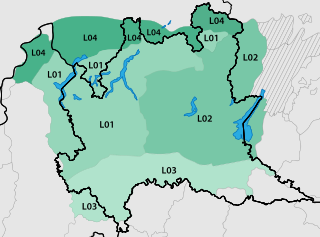
Cremonese (Cremunés) is a dialect of the Western Lombard dialect group spoken in the city and province of Cremona in Lombardy, Italy, with the exception of Crema and the area of Soresina, where an Eastern Lombard dialect is spoken, and the area of Casalmaggiore, where a form of Emilian closely related to Parmigiano is spoken.
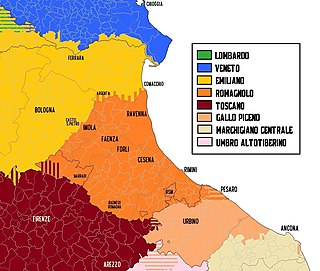
Romagnol is a Romance language spoken in the historical region of Romagna, consisting mainly of the southeastern part of Emilia-Romagna, Italy. The name is derived from the Lombard name for the region, Romagna. Romagnol is also spoken outside the region, particularly in the independent Republic of San Marino. Romagnol is classified as endangered because older generations have "neglected to pass on the dialect as a native tongue to the next generation".
The Italo-Dalmatian languages, or Central Romance languages, are a group of Romance languages spoken in Italy, Corsica (France), and formerly in Dalmatia (Croatia).
Tboli, also Tau Bilil, Tau Bulul or Tagabilil, is an Austronesian language spoken in the southern Philippine island of Mindanao, mainly in the province of South Cotabato but also in the neighboring provinces of Sultan Kudarat and Sarangani. According to the Philippine Census from 2000, close to 100,000 Filipinos identified T'boli or Tagabili as their native language.

The Catalan dialects feature a relative uniformity, especially when compared to other Romance languages; both in terms of vocabulary, semantics, syntax, morphology, and phonology. Mutual intelligibility between its dialects is very high, estimates ranging from 90% to 95%. The only exception is the isolated idiosyncratic Alguerese dialect.

Ilocano is an Austronesian language spoken in the Philippines, primarily by Ilocano people and as a lingua franca by the Igorot people and also by the native settlers of Cagayan Valley. It is the third most-spoken native language in the country.
